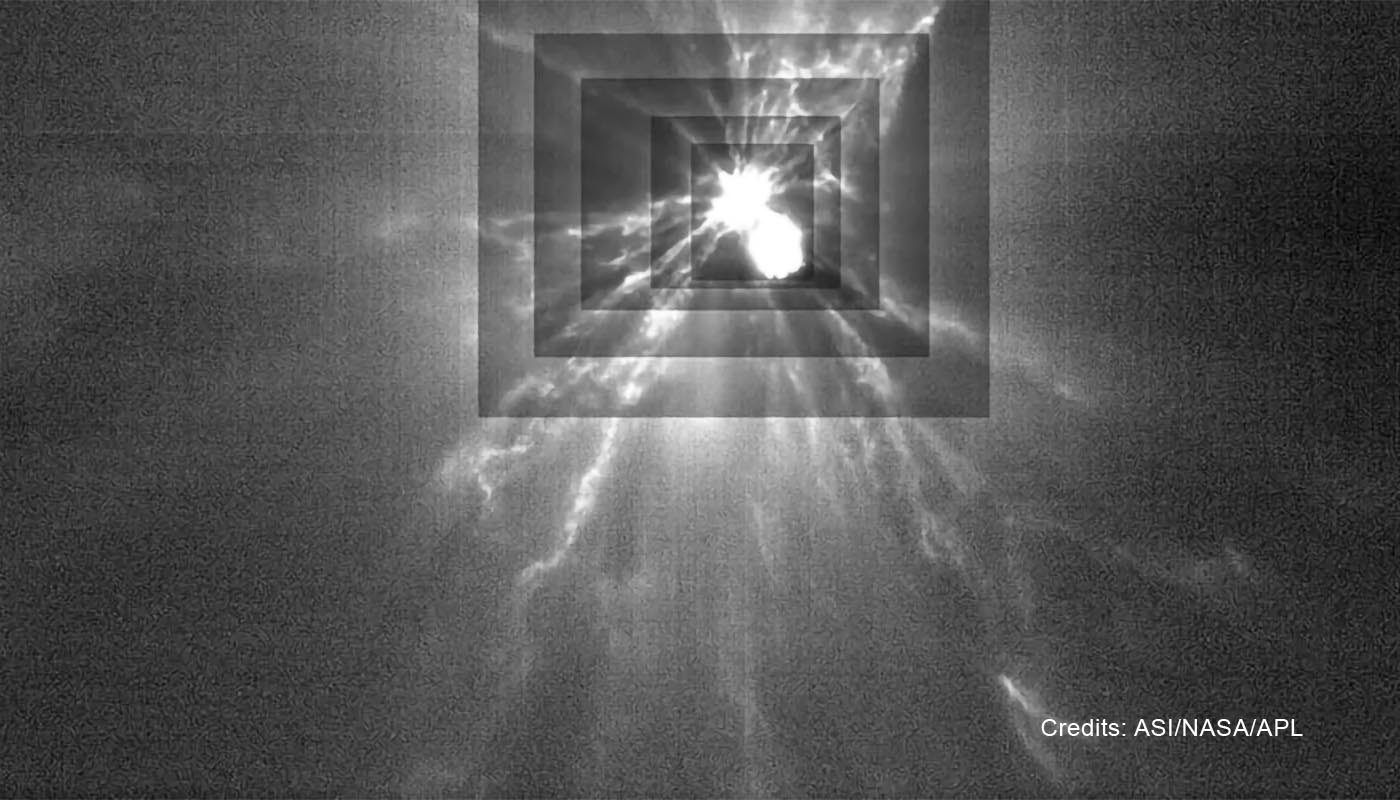THE DART/LICIACube MISSION, THE FIRST SUCCESSFUL TEST OF AN ASTEROID DEFLECTION
13 febbraio 2024 — 1 minuti di lettura

PhDAER Seminar
Tuesday, February 13, 2024, from 2 pm to 4 pm - Dipartimento di Scienze e Tecnologie Aerospaziali, Politecnico di Milano, Sala Consiglio DAER, Second Floor, Campus Bovisa, Via La Masa, 34, Milano (MI)
The Double Asteroid Redirection Test (DART) was launched on 24 November 2021 to perform the first test of a planetary defence mitigation technology, redirecting the asteroid Dimorphos, the small satellite of the binary Near Earth Asteroid (NEA) (65803) Didymos, via a kinetic impact.
During the 9.5-month cruise, LICIACube was hosted on the DART spacecraft.
On 11 September 2022, fifteen days before DART’s kinetic impact, LICIACube was released and autonomously continued its track toward the binary asteroid system.
LICIACube is equipped with two different cameras, LICIACube Explorer Imaging for Asteroid (LEIA) and LICIACube Unit Key Explorer (LUKE).
The science phase started 71 seconds before the nominal impact time, when LICIACube was about 1400 km from Dimorphos.
LICIACube followed the target and the evolution of the system up to 320 seconds after the impact.
LEIA images testified the DART impact by an increase in the luminosity of the target, while LUKE images reveal that the DART impact into Dimorphos generated a cone of ejected material with a large aperture angle.
The ejecta plume shows a complex and inhomogeneous structure, characterised by filaments, dust grains, and single or clustered boulders, providing insights into the properties of the ejecta, as well as the nature of Dimorphos.
LICIACube findings are also in agreement with recent results obtained using ground-based observations, confirming the anomalous silicate nature and the homogeneity of the system.
Speaker:
Simone Ieva's main research interest is the physical characterization of Solar System small bodies.
In particular, he studies the NEO population which is the most dangerous one but also the most accessible.
He published several articles about basaltic surfaces in the Solar System.
He collaborated with NASA Dawn, OSIRIS-REx, DART, and the ASI LICIACube mission.
After having obtained an MSc at Università di Roma TorVergata, he obtained a Ph.D. co-hosted by Università di Roma TorVergata and l'Ecole Doctorale ED 127.
He is currently a Staff Research Scientist at INAF - Osservatorio Astronomico di Roma after having spent research periods in Paris, Florence, and Rio de Janeiro.
Click here to download the flyer ↗
06.02.2024